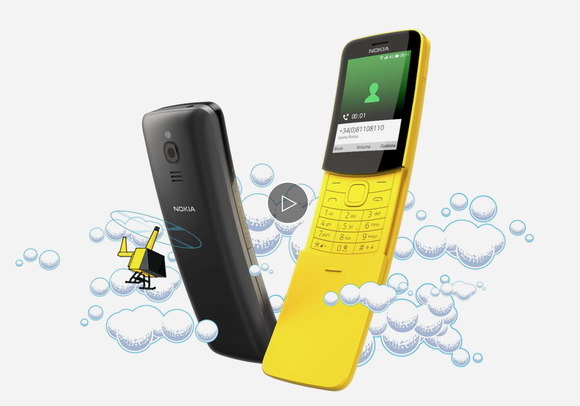Mobile World Congress 2018 Delivers Nostalgic Phones, Wireless Networks, and a Smart Speaker
Much of the hype around Mobile World Congress (MWC) 2018 in Barcelona surrounded Samsung's (NASDAQOTH: SSNLF) unveiling of its flagship Galaxy S9 phone. But the technological improvements in it, and in the slew of other smartphones revealed at MWC this year, were underwhelming, adding proof to the notion that the days of global smartphone growth are mostly behind us.
That doesn't mean investing in all things mobile is finished, though. Here are three highlights worth considering.
Nokia takes us down memory lane
Much like it did at MWC 2017, Nokia (NYSE: NOK) is betting some people have a yearning for the past. At the previous MWC, the Finnish company's centerpiece was the revamped 3310 "dumbphone" -- best known back in the day for its near-indestructible build and long battery life. This year it's the 8110 slider phone with modern updates like 4G connectivity, Google Assistant and Maps, Facebook and Twitter, the ability to store and play music, and significantly more battery life than a smartphone.

The Nokia 8110 is back from the grave. Image source: Nokia.
All of this nostalgia can be yours for under $100. But why is Nokia interested in bringing phones back from the dead? It's actually a Finnish company called HMD Global that's making Nokia phones these days. HMD unveiled four other Android phones alongside the 8110, aimed at providing premium features for an affordable price. The sweet thing for Nokia is that it isn't taking the risk of building the phones itself. It just receives licensing revenue for use of its name and technology.
That has become an important part of Nokia's business in the last couple of years. Licensing revenue hit a new record in the last quarter of 2017, and while the segment is only 8% of the top line, it's highly profitable. Licensing has been keeping the bottom line buoyant, while the company's network business has struggled. That's significant, because Nokia believes the stage is being set for growth in networking -- another theme at MWC.
The arrival of 5G
First applications for the next-generation wireless network, dubbed 5G, were on display at MWC. Qualcomm brought a new chip that can handle 5G speeds. KT Corp, South Korea's largest phone company, showed the difference 5G can make in video recording and streaming. Samsung had booths demonstrating virtual-reality experiences via the ultra-fast network.
5G is being planned as the backbone for many other technologies under development. Chief among them are the Internet of Things and artificial intelligence, two broad terms that cover everything from embedded connections in devices to autonomous vehicles and computer vision. While 5G will begin launching for consumers later this year, faster smartphone connections will be just the beginning.

Image source: Getty Images.
The Internet of Things invades the home
The smart home has become the latest battleground for technology platforms and could be at the center of the race to 5G. In the meantime, though, it's all about the smart speaker and home assistants. The Amazon Echo is currently in the lead, with Alphabet's Google Home also making a successful run. Apple recently released the HomePod, and Facebook is reportedly readying for the launch of its own speaker lineup by this summer.
While everyone was focused on the Galaxy S9, Samsung also confirmed rumors that it's getting into the smart speaker race, too. Currently bearing the name Bixby, the device should be out during the second half of 2018 and is targeting the premium end of this market.
The smart speaker and the other devices at MWC prove technology continues to become an ever more important part of everyday life. That's why big tech should be part of the backbone of every investment portfolio. There's still plenty of development left in the world of mobility. In the years ahead, 5G networks and the tech it will support will likely be in the spotlight.
More From The Motley Fool
John Mackey, CEO of Whole Foods Market, an Amazon subsidiary, is a member of The Motley Fool’s board of directors. Suzanne Frey, an executive at Alphabet, is a member of The Motley Fool’s board of directors. Nicholas Rossolillo owns shares of Alphabet (A shares), Alphabet (C shares), Apple, and Facebook. The Motley Fool owns shares of and recommends Alphabet (A shares), Alphabet (C shares), Amazon, Apple, Facebook, and Twitter. The Motley Fool owns shares of Qualcomm and has the following options: long January 2020 $150 calls on Apple and short January 2020 $155 calls on Apple. The Motley Fool has a disclosure policy.

 Yahoo Finance
Yahoo Finance 